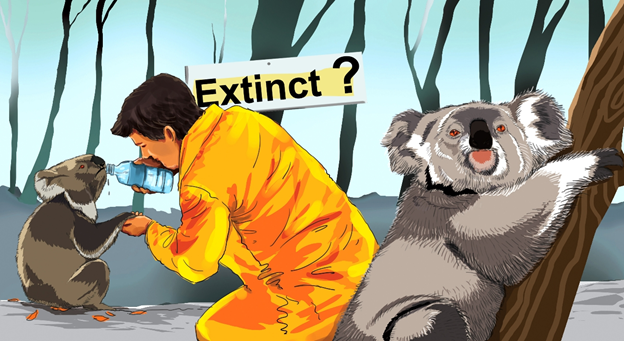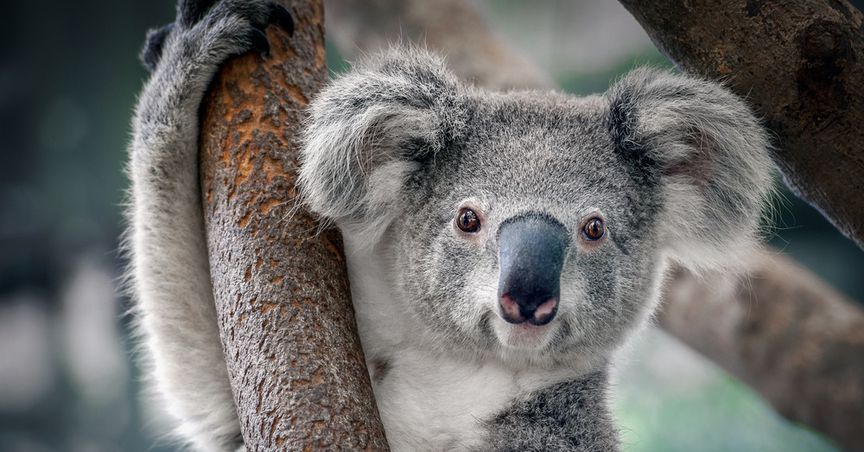Summary
- World Wide Fund (WWF) releases new report on Australian bushfires and its impact of wildlife.
- The reports reveal devastating effects on not just koalas and kangaroos but other millions of lesser-known important species.
- Experts suggest an immediate call to action in order to save koalas and other animals from going extinct.
Australia's beloved animal is in trouble. According to the World Wide Fund for Nature (WWF), more than 60,000 koalas were killed, injured or displaced last summer during Australian bushfires that ravaged many parts of the country.
WWF-Australia Chief Executive Dermot O'Gorman said in the latest report that the 60,000 figure is a devastating number especially for koalas as the species was already heading towards extinction in the Eastern region of the country. O'Gorman further stated that the fires were one of the worst wildlife disasters in modern history and they cannot afford to lose koalas on their watch.
Last summer's bushfires, aptly called "the black summer" by Prime Minister Scott Morrison, killed 33 people and destroyed over 24 million hectares in the country. Approximately 3 billion native mammals, including 2.46 billion reptiles would have been impacted due to the bushfires according to the WWF study. The study paints a disturbing picture of the ecological toll that "black summer" fires unleashed from late 2019 to early 2020.
Devastating impacts on Australian wildlife
A team of ten researchers and scientists studied the impacts of bushfires, depicting the devastating losses in habitats across the country. The report is commissioned by environmental group WWF-Australia.
The impact on koalas has been especially horrendous. Their habitat has been rapidly decreasing even before the bushfire took place as the land is increasingly being occupied for agriculture, urban development, mining and forestry. In a 2016 report, a panel of koala experts had mentioned that the koala population in Australia stood at 329,000. Since then, the region has seen bushfires almost every year; therefore, the number would have decreased further.
During the bushfires, South Australia's Kangaroo Island was affected the most for koalas. WWF said that the fires impacted about 40,000 koalas in that particular region. About 11,000 koalas in Victoria, and 8,000 koalas in New South Wales (NSW) were affected.
An NSW parliamentary inquiry in June states that if the government does not immediately intervene to protect the koalas and their habitat, the species is likely to go extinct by 2050 in New South Wales. With ongoing efforts to save the species, the WWF aims to increase the number of koalas in eastern Australia by 2050.
The plan is to disperse seeds of eucalyptus trees via drones in the region in order to grow suitable shelter and food for koalas. WWF also intends on establishing funds to motivate the landowners to build an ecosystem which is preferable for koalas to consider safe haven and they grow in population.
Also Read: Bushfire Affected Communities Receiving Blockbuster Funding Support

Image Source - ©Kalkine Group 2020
Climate change could worsen the situation
The experts who helped guide the project, believes that because of climate change, these fires have chances of occurring again, and the country must issue a call to arms to avert that.
About 181 million birds and 51 million frogs lived in the bushfire area of around 12.6m hectares which is the size of England. Total 143 million mammals were affected in the devastating bushfires among which, one million were wombats, five million kangaroos and wallabies.
39 million possums, five million bats and gliders along with 50 million native species of mice and rats were also impacted. Approximately 5½ million bettongs, bandicoots, quokkas and potoroos also came in the path of massive bushfires.
The team, however, because of lack of data and knowledge could not be sure on the number of animals that died out of 3 billion. According to the report, even if the resident animals managed to escape and were not killed directly by fires, the injury, stress, and the deprivation of critical resources would have put them at a higher risk of death.
Immediate call for action
The report released by the WWF is crucial because it not only gives information on Australian icons such as kangaroos and koalas but also focuses on uncommon but essential species. Australia is famous for its wildlife, even though many lesser-known animals are living in these areas. Various techniques and sources have been used to assess the impact on Australian wildlife.
Mammals’ estimates are based on available data depending on the identity of species in different areas. Lastly, the report has provided 11 recommendations which will help understand the impact of bushfire in a better manner. It also states that extensive research is required for species and animals and most importantly, better crisis management is necessary to avoid such threats in the future. Under WWF’s Regenerate Australia plan, an initiative has been taken to revive the largest and most innovative landscape and wildlife in the country.
Good Read: Are Deadly Bushfires a Threat to Australian Economic Growth?






